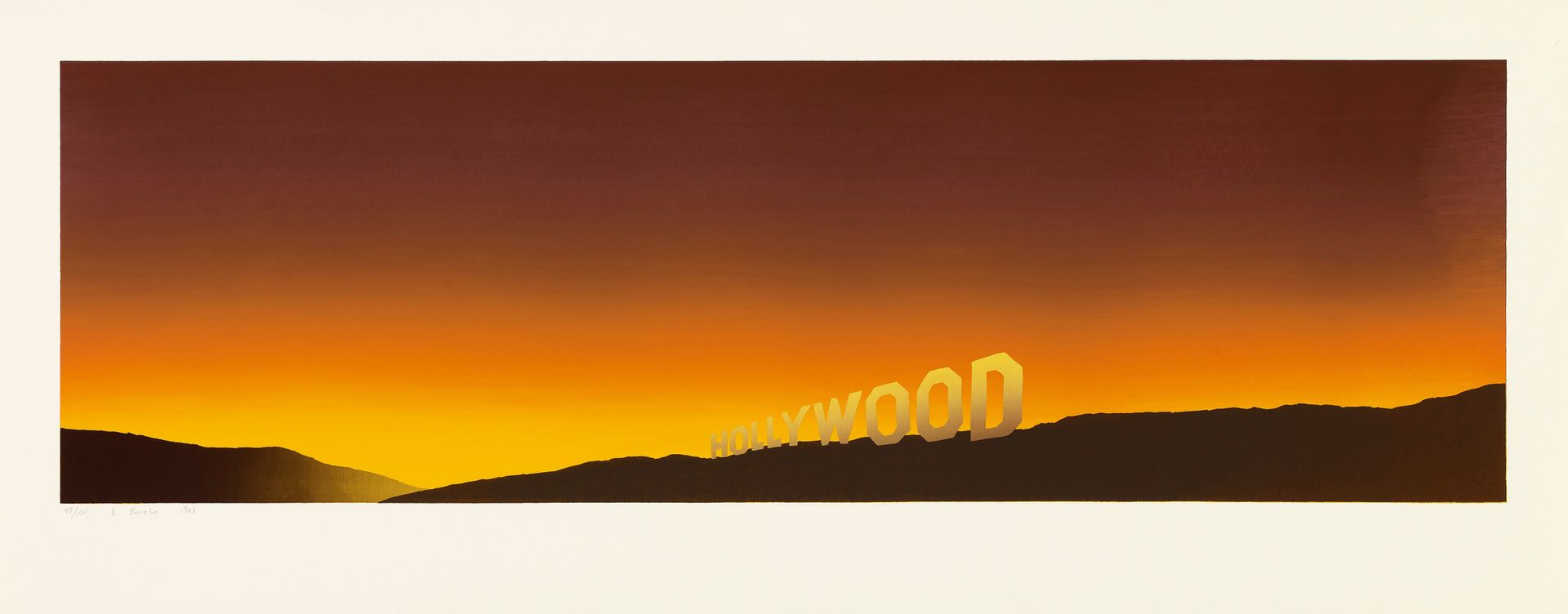The allure of the Western frontier has been a central part of Ed Ruscha’s biography and mythology ever since he drove his black Ford from Oklahoma City to Los Angeles in 1956, following Route 66 most of the way to the school now known as Cal Arts. It is also the concept for a show organised by the De Young Museum in San Francisco set to open in July 2016: Ed Ruscha and the Great American West.
The exhibition, divided into nine parts, stars with a focus on landscapes by Ruscha that stretch across our field of vision in the same sort of aspect ratio as a car windshield. These paintings and prints are even more panoramic than a movie screen—Hollywood being another key theme for the show.
“You would think it had been done before, but I couldn’t find any other show on Ed that focused on the West. It may be something other curators have avoided out of fear or worry that it paints Ed as a regional artist,” said the show’s curator, Karin Breuer. But she added that the artist liked the angle when she first presented it to him—and of course his reputation these days is secure. Breuer added that the grand-sounding exhibition title is meant to be somewhat tongue-in-cheek, as so many found phrases or sayings in Ruscha’s own work “are also ironic, humorous or have a double meaning”.
So why is this vision of the American West taking place in San Francisco instead of Ruscha’s longtime home, Los Angeles?
“It’s a bit curious to me too,” Breuer said. “The show could absolutely be done in Los Angeles and we have many lenders from the LA area. But there are also a number of major collectors in San Francisco who focus on his work—you might be surprised by how deep a connection he has here.”

The other connection is that the Achenbach Foundation for Graphic Arts, the department in charge of works on paper for the De Young and its sister museum the Legion of Honor, owns about 450 prints by Ruscha. Most of these were received 15 years ago in an acquisition of 325 prints—his full graphic archive at the time. The acquisition also included a gift of one print from every new edition he has made since.
The 2016 show is due to include works across different media, however. While other surveys have focused on particular genres—say his paintings at the Tate or photographs at the Whitney—this one tries to get at the fluidity of his practice, with around 30 paintings, 40 prints, 25 photographs, 20 drawings and 5 artist’s books included.
Only one painting comes from the de Young’s own collection: A Particular Kind of Heaven, an oil on canvas from 1983. Those words float untethered and uncontextualised against a cobalt blue sky streaked with golden yellows, the same dramatic colours as a Turner painting.
So far, Breuer said, there are no plans to travel the show inspired by the open road.

